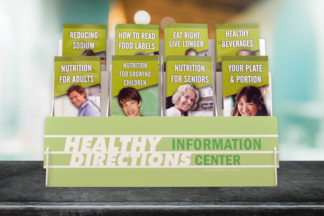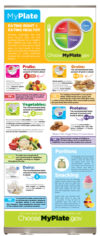Healthy Directions: Nutrition for Adults Pamphlet
SKU: PB-PH22 Minimum Qty: 100- Points out the importance of paying attention to eating habits
- Identifies the hazards of convenient food options
- Explains the need for a balanced diet
- Notes the most common nutrient deficiencies
- Recommends starting good nutritional habits
- Sold in packs of 50
| 100-499 | 500-999 | 1000-2499 | 2500-4999 | 5000+ |
| $0.55 | $0.48 | $0.43 | $0.39 | $0.35 |
$0.55
Description
This pamphlet provides a thorough look at the basics of nutrition, ensuring that adults will understand what they can do to improve their health. An ideal product for the doctors office, weight loss centers, fitness centers, nutritionists and more. They’re also a great way to promote your adult health education campaigns. On the back of the pamphlet is where you have the option of adding your custom message and/or logo. Customizing your brochure is a great way to increase healthy eating and nutrition awareness while also gaining exposure for your department or organization. The imprint area is large enough to display your logo and text for all to see, increasing your organizations visibility and further supporting your health program.
To see a full PDF version of this pamphlet, click the Instant Preview tab above.
This brochure is also available in Spanish.
If you like this Nutrition for Adults Pamphlet, then check out more of our Nutrition materials here.
For more pamphlet topics, click here.
To learn more about proper nutrition at ChooseMyPlate.gov.
Additional information
| Weight | 0.02 oz |
|---|---|
| Dimensions | 9.5 × 3.75 × .01 in |
| Grade Level | All Ages |
| Type | |
| Free Sample | Yes |
| Minimum Order Quantity | 100 |
| Sold in Multiples Of | 50 |









